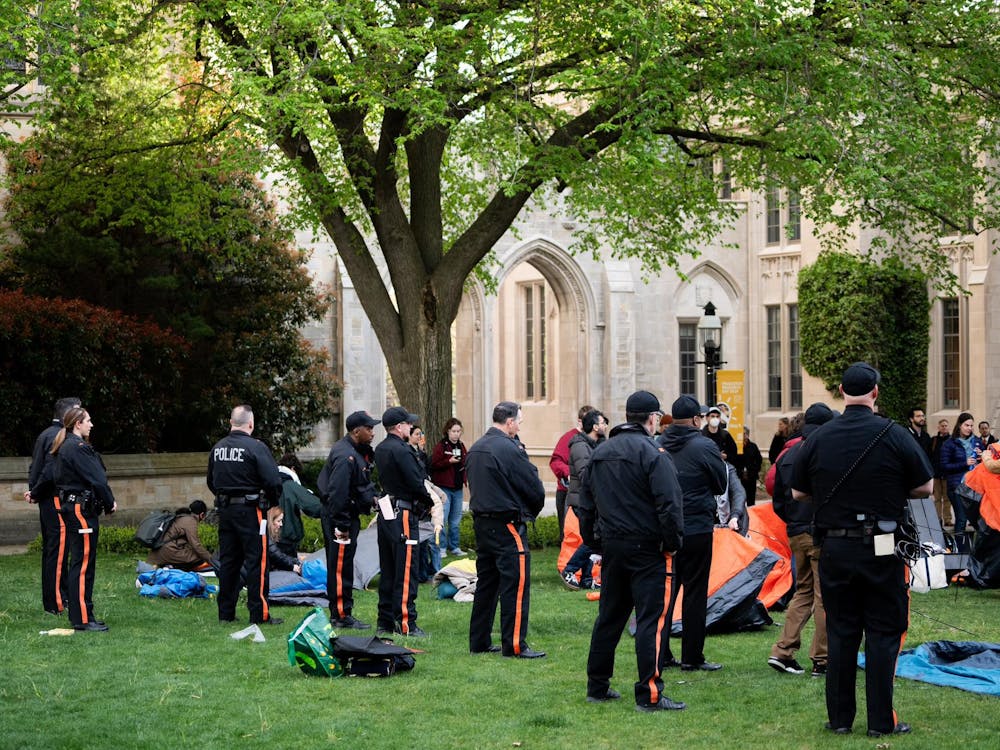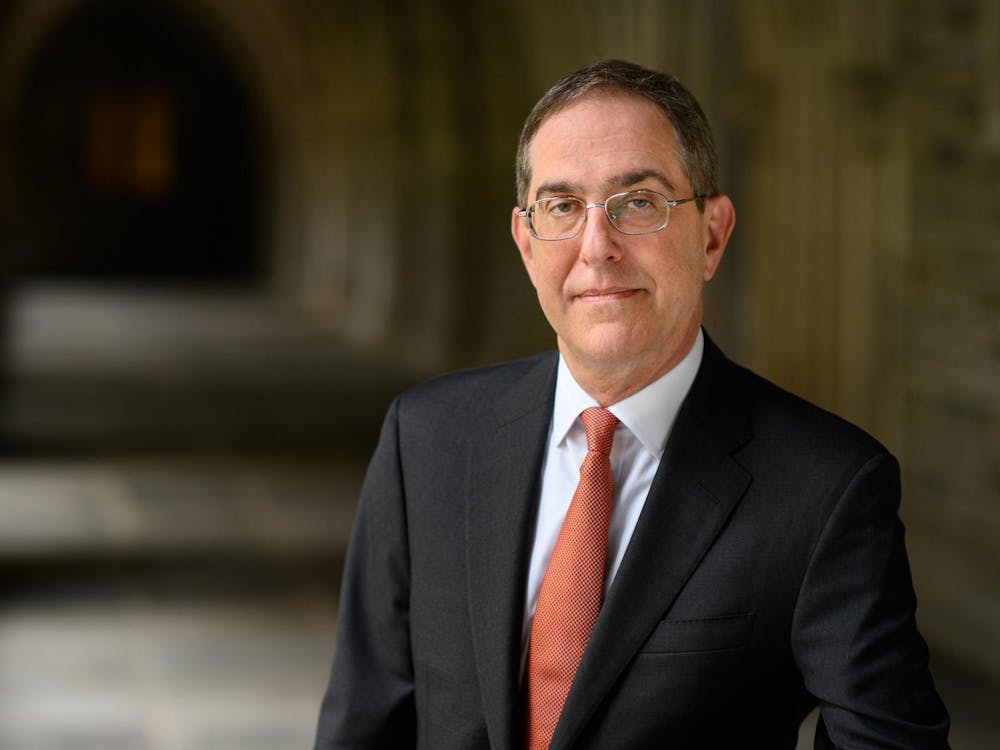As we were all packing to either first arrive or return to Princeton, fall semester had already begun at most other colleges. And along with the return of classes came the return of the debate over trigger warnings. This fall the debate was re-triggered, so to speak, by a letter to all freshmen against such notices from the Dean of Undergraduate Students at the University of Chicago.
It was supposed to be a welcome letter, but in reality it was anything but. He blatantly stated that “our commitment to academic freedom means that we do not support so-called trigger warnings.” Yet such warnings do not hinder debate or aid students to “retreat from ideas and perspectives at odds with their own,” as the Dean claimed. Trigger warnings actually accomplish just the opposite — they allow more students to actively engage with the material of a course.
Trigger warning have received a lot of pushback over the last year or so, but they are actually quite a simple and longstanding concept. Trigger warnings originated in 1918 after World War I. It was just a notice meant “to flag content that depicted or discussed common causes of trauma, like military combat, child abuse, incest and sexual violence.”
In classrooms, the cautions tend to take the form of a note in the syllabus or a professor warning that material some week might contain discussion of sensitive material that could be difficult for some students. For example, a trigger warning might alert students that some book in a literature course contains a graphic depiction of sexual violence. Essentially, it is a content warning regarding subjects that touch on trauma, be it sexual assault, military PTSD, or something else.
The presence of a trigger warning does not automatically entail that someone will not engage in material. Rather, it simply provides students with advance information to prepare themselves and enable them to fully engage in class. Perhaps it means students will have the chance to communicate with the professor about their perspective in advance. Perhaps it just allows a student to internally prepare to discuss an issue publicly. How one chooses to act on the information provided in a trigger warning is their prerogative. What is clear, though, is that without said information, they might not be able to fully engage with the material, if at all. Triggering trauma unexpectedly, particularly in a public classroom setting, can lead someone to disengage. Content warnings minimize the likelihood of that happening.
Understanding what trigger warnings actually are makes it clear that they do not “scrub campuses clean of words, ideas, and subjects that might cause discomfort or give offense” as The Atlantic article that led the charge against trigger warnings claims. The goal is not to erase discussion of traumatic subjects — it is to provide in advance the information that allows all to engage.
Content warnings aren’t new or rare. They have long been used to give the audience, in whatever forum, the right to make informed decisions for themselves. There are warnings at the beginning of TV shows ranging from “Law and Order: SVU” to “That 70’s Show.” Movies are rated with memos as to what material led them to be classified as such. Like trigger warnings for certain classroom material, such notices do not restrict any content but allow consumers to adjust their actions accordingly.
Opponents like to say that trigger warnings coddle students and don’t reflect what will happen in the real world. But it is also true that conversations regarding traumatic events, such as sexual violence, also don’t spring up out of the blue in ways one can’t escape either. Just as such material isn’t applicable in many real world situations, trigger warnings are not applicable in all classes — I haven’t come across the need in the math, science, or economic courses I’ve taken, for example. But a heads-up can help students engage with uncomfortable and challenging topics when it is pertinent, both in real life and especially in a classroom where a student cannot otherwise escape or disengage. Sensitivity to others is not coddling.
Ironically, the same people who led the charge to have content warnings for TV shows and movies are now arguing that similar warnings in classrooms are coddling over-protected millennials. They are also wrongly comparing efforts to prevent controversial speakers from appearing on campus to trigger warnings. They are not the same. Having these speakers on campus promotes academic freedom. Students who would be upset by such presenters may simply choose not to attend. Having these speakers allows their offending views to be challenged and discussed.
But describing trigger warnings as an infringement of academic freedom, as the University of Chicago welcome letter describes, is not only wrong; coming from university leadership, it is also dangerous. The leadership appears more concerned about pandering to conservative funders by bashing so-called political correctness than it is concerned about respecting students. And that should be a warning to us all.
Perhaps what the critics really mean is to debate what constitutes as likely trauma-inducing and thus deserving of a trigger warning. The more reasonable debate centers around this empirical question. Many of trigger warnings’ critics conflate what they see as the unreasonable breadth of issues that require trigger warnings as the problem — not necessarily the existence of a policy to warn in cases of what they see as actually traumatic.

There are legitimate empirical questions here. Experts can evaluate them and their factually supported conclusions should be employed in the execution of trigger warnings. But I, for one, have neither the personal experiences nor the psychological expertise to be qualified to tell anyone their trauma is not legitimate. Neither do most, if any, students. As Imani Thornton stated in her column last week, “It is easy for someone who considers [trigger warnings] dispensable to overlook them and even consider them detrimental, without weighing the costs and benefits to others, namely those who do need trigger warnings.”
To me, trigger warnings as a theoretical policy, regardless of the details of the empirically supported extent, are such an obviously positive action that the pushback is really frustrating. A good friend of mine was sexually assaulted a few years ago. Understandably, certain related content sets off panic attacks. She also has been diagnosed with severe migraines for years; for that disability, one wouldn’t question that a professor ought to give a warning before showing a video full of flashing strobe lights. Likewise, she, or someone in a similar situation, should not be forced to have panic attacks triggered by sexual violence while in a classroom setting and in front of her professor and peers. Trigger warnings allow her to mentally steel herself and engage with the material. Anything else is an able-ist framework that denies the real mental health effects of trauma. Trigger warnings helps someone like my friend without any detriment to others. Where is the harm in that?
Marni Morse is a politics major from Washington, DC. She can be reached at mlmorse@princeton.edu.








